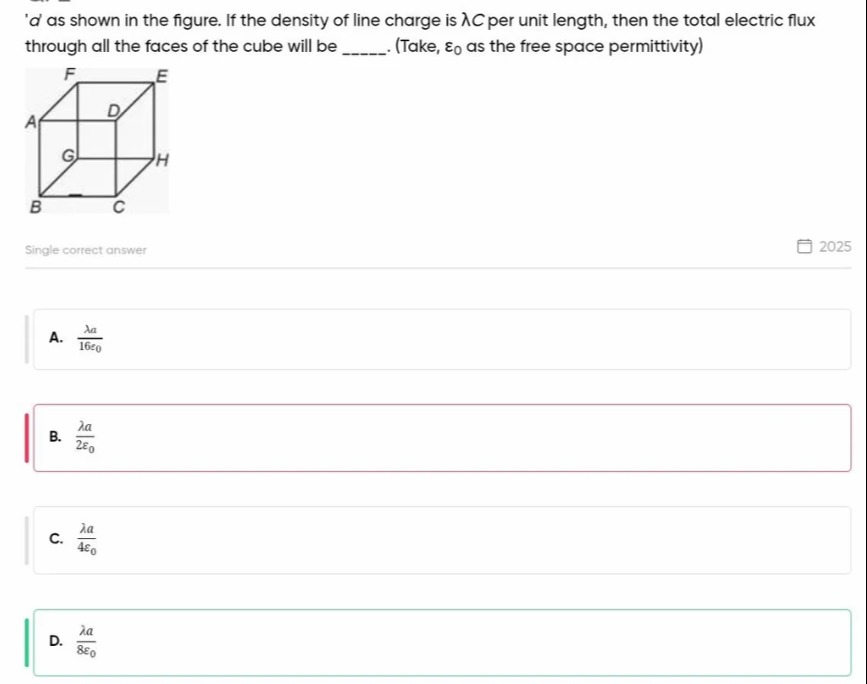Question
Question: a' as shown in the figure. If the density of line charge is $\lambda$C per unit length, then the tot...
a' as shown in the figure. If the density of line charge is λC per unit length, then the total electric flux through all the faces of the cube will be ________. (Take, ϵ0 as the free space permittivity)

16ϵ0λa
2ϵ0λa
4ϵ0λa
8ϵ0λa
4ϵ0λa
Solution
The problem asks for the total electric flux through all the faces of a cube of side length 'a' when a line charge of linear density λ is placed along one of its edges, say BG. The length of the edge is 'a', so the total charge on the edge is Q=λa.
According to Gauss's Law, the total electric flux through a closed surface is given by Φ=ϵ0Qenclosed, where Qenclosed is the net charge enclosed by the surface.
In this case, the line charge is placed along an edge of the cube. When a charge distribution is on the boundary of the Gaussian surface, the charge enclosed by the surface is only a fraction of the total charge. For a line charge along an edge of a cube, the edge is shared by 4 identical cubes that meet at that edge.
Consider the edge BG. If we place 4 identical cubes such that they all share this edge, then the line charge along BG is effectively inside the combined volume of these 4 cubes. The total charge on the edge is λa. By symmetry, the electric flux originating from this line charge will be distributed equally among the 4 cubes.
The total flux originating from the line charge of length 'a' with density λ is ϵ0λa. Since this line charge is shared by 4 identical cubes when placed along an edge, the charge effectively enclosed by one cube is 41 of the total charge, if we consider the contribution to the flux through one cube. Therefore, the total electric flux through the faces of the given cube is 41×ϵ0Total charge=41×ϵ0λa=4ϵ0λa.
This result can be understood by considering how many identical cubes are needed to make the edge an internal line segment. If we place 4 cubes around the edge, the edge becomes an internal edge for the combined structure. Thus, the flux through one cube is 1/4 of the total flux from the line charge.
